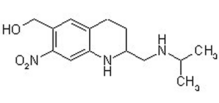To the Editor: The key issue in the development of drug resistance in parasitic helminths that do not multiply in their final host is the proportion of worms that remain in refugia (i.e., that are not exposed to the drug) relative to the number that are exposed but survive treatment (1). If the latter population is relatively large (as might occur, for example, after mass rather than targeted treatment), the worms that survive therapy could make a substantial contribution to the gene pool of the next generation, thus increasing the likelihood that resistance would develop. Since only a relatively small part of the population in Msambweni area of the Coast Province was treated by King et al. (2), it would be surprising if resistance had emerged.
If a predictive model is to work well, information should be available about the actual percentage of worms that already have genes for resistance. For example, in some communities in Kenya oxamniquine-resistant worms were relatively common before the drug had been used widely (3). The same may be true for praziquantel resistance in Schistosoma mansoni in Senegal (4-6). The large variation in response of S. haematobium found in field trials (Table 2 in [2]) suggests that genes for resistance to praziquantel could already be present in some areas. Until there are polymerase chain reaction probes for praziquantel resistance, the prevalence of genes for resistance to praziquantel could be estimated by giving two--or preferably three--treatments of praziquantel at monthly intervals and determining the reduction in egg counts after each round of treatment. Resistance could be confirmed through infection and treatment of rodents with isolates from uncured patients or by a simple test measuring the response of miracidia to praziquantel (7). With this information, it should be possible to make realistic predictions about the development of praziquantel resistance.
Although King and colleagues suggest the use of targeted treatment, it would perhaps be unfortunate if the optimistic-sounding title of their paper encouraged the mass use of praziquantel in the belief that resistance will not develop rapidly. This hope cannot be justified on the evidence presented.
References
(1.) van Wyk JA. Refugia--overlooked as perhaps the most potent factor concerning the development of anthelmintic resistance. Onderstepoort J Vet Res 2001:68:55-67.
(2.) King CH Muchiri EM, Ouma JH. Evidence against rapid emergence of praziquantel resistance in Schistosoma haematobium, Kenya. Emerg Infect Dis 2000;6:585-94.
(3.) Coles GC, Mutahi WT, Kinoti, GK, Bruce JI, Katz N. Tolerance of Kenyan Schistosoma mansoni to oxamniquine. Trans R Soc Trop Med Hyg 1987;81:782-5.
(4.) Fallon PG, Sturrock RF, Niang AC, Doenhoff MJ. Diminished susceptibility to praziquantel in a Senegal isolate of Schistosoma mansoni. Am J Trop Med Hyg 1995;53:61-2.
(5.) Stelma FF, Sall S, Daft B, Sow S, Niang M, Gryseels B. Oxamniquine cures Schistosoma mansoni infection in a focus in which cure rates with praziquantel are unusually low. J Infect Dis 1997;176:304-7.
(6.) Liang Y-S, Coles GC, Doenhoff MJ, Southgate VR. In vitro responses of praziquantel-resistant and -susceptible Schistosoma mansoni to praziquantel. Int J Parasitol 2001; 31:1227-35.
(7.) Liang Y-S, Coles GC, Doenhoff MJ. Detection of praziquantel resistance in schistosomes. Trop Med Int Health 2000;5:72.
G.C. Coles, * Y.S. Liang, * and M.J. Doenhoff ([dagger])
* University of Bristol, Bristol, United Kingdom, and ([dagger]) University of Wales, Bangor, United Kingdom
COPYRIGHT 2001 U.S. National Center for Infectious Diseases
COPYRIGHT 2001 Gale Group



